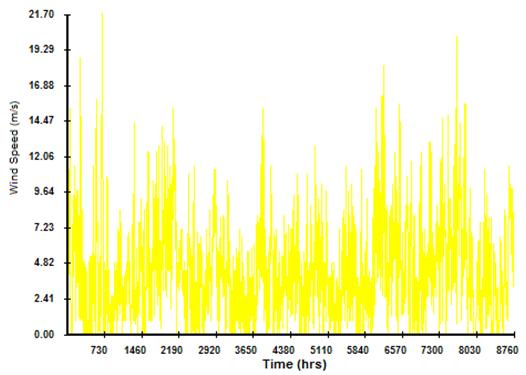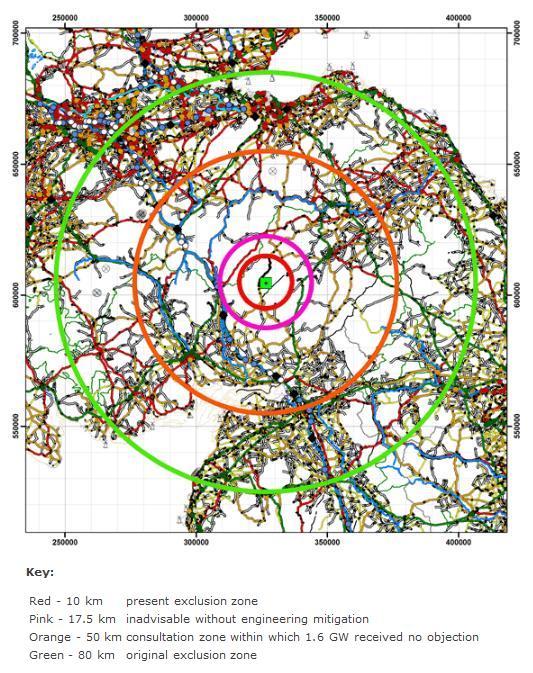
Project Overview
Construction
Occupancy
Behavioural models
Demand
Renewable technologies
Conclusion
Team
Acknowledgements
Renewable Technologies
Wind
The first option we considered was wind power. According to the climate data we have for this area (climate data for Eskdalemuir which is significantly close to our site), the wind profile for a typical year is the following:

Although wind potential in the area of Craik is remarkable, unfortunately we could not take advantage of it because of the following constraint:
A few kilometres away, there is the Eskdalemuir Seismological Recording Station which uses highly sensitive equipment to record earthquakes and underground nuclear testing activity around the world. As far as the latter is concerned, the Ministry of Defence (MOD) has lifted objections about the installations of wind turbines in the area.
More specifically, according to British Wind Energy Association (BWEA - now renamed as Renewable UK), in 2006 there were discussions between the Department of Trade and Industry, MOD and Scottish Executive concerning this subject and taking into account a study from Keele University ("Microseismic and Infrasound Monitoring of Low Frequency Noise and Vibrations from Windfarms-Recommedations on the Siting of Windfarms in the Vicinity of Esdalemuir,Scotland") they concluded to establish a 80 km 'exclusion zone' (as shown in the following map).

Source: BWEA (now renamed as Renewable UK)
Unfortunately, Craik site is within 10km from Esdalemuir station. Although the mentioned study was considering only large scale wind turbines, it was decided that wind power generation will not be a feasible choice for our case because of the conflicts on this subject and the possibility that small scale wind turbines could be forbidden in this area.
